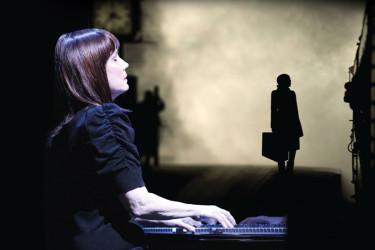
The 1982 play by Caryl Churchill called Top Girls begins with a dinner party celebrating Marlene’s big promotion… but as the guests enter, it becomes clear that it’s not just any party. They’re historical and fictional women, with overlapping stories to tell. A.C.T.‘s production, directed by Tamilla Woodard shows that rather than being a time capsule from Thatcher-era Britain, there’s still resonance with the lives of contemporary women.
There’s more information about the production at the A.C.T. website.
“I think it has enormous echoes to the current world that we live in,” she says. “We are in that moment again, and I think what you realize is the more things change, the more they stay the same. Not just politically, but also sort of like how women are operating in our own sort of public sphere.” Marlene’s guests arrive and lend an air of the surreal. “The guests who show up are very odd. Because Marlene is a modern woman, and in walk these women from history. From the 9th Century Pope, to 13thCentury concubine and Buddhist nun, to figures who are not actually real, but were painted or written into literature.” There’s a woman from a painting by Pieter Breughel, and the woman who was a character in Chaucer’s ‘The Clerk’s Tale’. They each tell their stories, in fragments. “This particular play uses a lot of overlap. The way that language works in this play is the way that psychologists say that women’s minds work. It’s all multitasking. So you can be in speech and in listening at the exact same time.” We learn more about Marlene after the party, and then later see her in her role in the working world. “And then we’re in an office environment in London, and it’s fancy and it’s sleek and these women are moving the world, making it happen, we think… And of course, we’re also watching the competition that happens between women in the workplace… What it means to uphold the patriarchic system that puts so many other communities on the fringe. How do we change that? That was the question that Churchill put forward in 1982, and I think we’re coming back around to see that we haven’t solved anything, we still have to figure out how we’re going to live together.”







